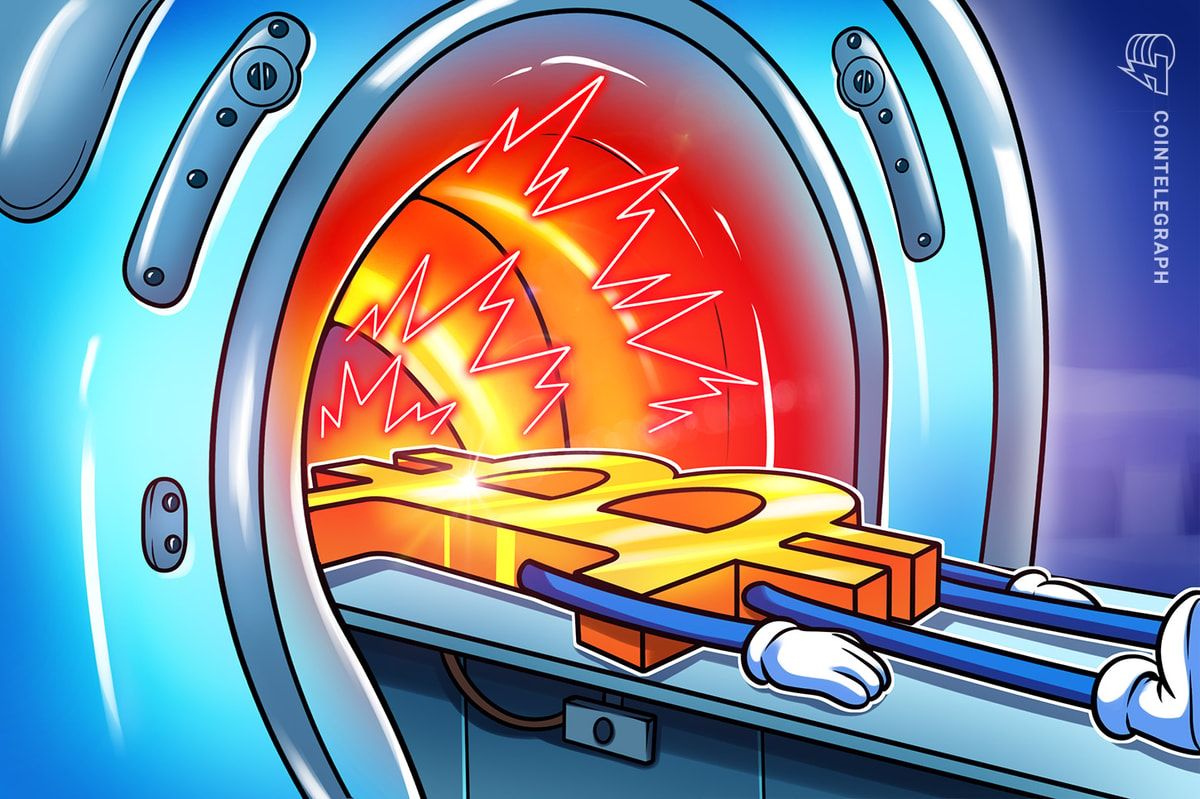What is sBUIDL by BlackRock?
SBUIDL is BlackRock’s first tokenized fund with native decentralized finance (DeFi) capabilities.
SBUIDL is the DeFi-compatible version of BlackRock’s $1.7-billion tokenized money market fund, the BlackRock USD Institutional Digital Liquidity Fund (BUIDL). BlackRock’s sBUIDL fund is more than just a digitized version of a treasury; it’s a glimpse into a future where traditional finance flows through decentralized pipes.
While the BUIDL fund itself launched in March 2024 on Ethereum, sBUIDL is its ERC-20 counterpart, designed to interact with DeFi protocols. BUIDL holds short-term US Treasurys, cash and repurchase agreements (repos), whereas sBUIDL allows holders to interact with these assets onchain.
Repurchase agreements (repos) are short-term, collateralized loans where securities are sold with an agreement to repurchase them later for a higher price. Meanwhile, BUIDL is a tokenized money market fund aiming to generate stable yield while minimizing risk, including repos alongside Treasurys and cash:
- Adds liquidity
- Maintains capital preservation
- Helps with yield generation in a very short duration.
Repos are a standard part of traditional money market funds for exactly these reasons.
Released in May 2025, sBUIDL is issued by Securitize and allows tokenholders to earn yields backed by top traditional trusted financial instruments, such as short-term US government debt. SBUIDL is minted from the BUIDL fund via Securitize’s sToken vault technology.

Securitize’s sToken framework issues tokens with onchain transfers, compliance and investor rights baked into the smart contract. As of May 2025, sBUIDL is currently available on Ethereum and Avalanche, with integrations into DeFi protocols like Euler.
How does sBUIDL work with DeFi?
SBUIDL is an ERC-20 token that represents a 1:1 claim on the BUIDL fund. It brings tokenized US Treasurys to DeFi protocols, starting with Euler.
Until now, most tokenized real-world assets (RWAs) stopped at the “representation” layer, essentially putting a real-world asset onchain but not allowing it to be used in DeFi protocols due to compliance restrictions, lack of programmability or the absence of composability. SBUIDL changes that.
SBUIDL unlocks the ability to use US Treasurys (originally backing the BUIDL Fund) in DeFi the same way you would use Ether (ETH) or USDC (USDC) on a DeFi platform. This is a fundamental shift. Treasurys, one of the most stable, low-risk yield sources globally, were previously siloed in traditional markets. With sBUIDL, they are now programmable and able to live inside smart contracts and interact with DeFi applications.
Furthermore, sBUIDL ensures Know Your Customer (KYC)-compliant onboarding without compromising DeFi’s programmability.
In May 2025, Euler Finance became the first DeFi protocol to accept sBUIDL as collateral. That means users can now lend, borrow and build on top of US Treasurys inside a permissionless environment. And it is as seamless as this:
- Securitize issues sBUIDL as a compliant ERC-20 token.
- Users onboard through Securitize and receive sBUIDL tokens.
- These tokens are deposited into Euler, which supports yield generation, collateralization and leverage.
Thus, Treasurys are no longer just passive, offchain instruments; they’re composable money legos in DeFi’s world. However, sBUIDL doesn’t give direct control over the underlying Treasurys — it represents exposure. The custody and redemption are handled by regulated intermediaries.
Did you know? Tokenized RWAs are projected to grow into a $16-trillion market by 2030, according to a report by Boston Consulting Group (BCG). That’s more than the current market cap of all cryptocurrencies combined.
What makes sBUIDL different from traditional funds?
BUILD is a programmable treasury asset that can live inside a smart contract.
On the surface, sBUIDL looks like any other fund backed by US Treasurys. But it is fundamentally different in how it operates. Traditional funds are built for the analog world: paper-heavy, slow-moving and restricted by intermediaries. SBUIDL is digital-native and designed for smart contracts, not spreadsheets.
This difference goes beyond speed or convenience. It’s about composability, the ability to plug into an open financial stack. With sBUIDL, the once-static treasury fund becomes dynamic collateral in DeFi:
- You can deposit it into a lending pool, bundle it into structured products, or create automated strategies, all without needing a custodian’s permission.
- Moreover, transparency is built-in. Instead of quarterly reports or delayed fund updates, sBUIDL offers real-time visibility into ownership and fund flow on the blockchain. And with compliance enforced at the contract level, it doesn’t rely on trust in intermediaries but on code instead.
A comparison to illustrate the differences:

What is the sToken framework?
The sToken framework is how Securitize makes real-world assets DeFi-native while staying compliant.
The sToken is a programmable wrapper around tokenized assets. It directly enforces transfer restrictions, ownership rights and jurisdictional compliance in the smart contract.
Securitize’s sToken standard:
- Is ERC-20 compatible, meaning it works with wallets, DeFi and exchanges.
- Includes real-time compliance logic (e.g., KYC, geofencing).
- Allows real-world asset integrations with DeFi DApps like Euler and others.
Why does sBUIDL matter for crypto and TradFi?
SBUIDL signals that institutional capital is ready to embrace DeFi rails.
BlackRock isn’t just “experimenting” with tokenization anymore — it’s actively moving serious capital onchain. The BUIDL fund has already surpassed $1.7 billion in assets under management (AUM) as of March 2025, and sBUIDL is now part of the broader BlackRock digital assets strategy.
Its implications are huge:
- Stable crypto-native yield: Treasurys now indirectly power DeFi protocols.
- New risk models: Users can lend/borrow against government debt instead of volatile crypto.
- Institutional onchain adoption: Trusted players like BlackRock and Securitize bring legitimacy to the space.
And for builders and protocols? SBUIDL is a composable infrastructure. Developers can integrate tokenized treasuries into their apps, unlocking new financial products that blend DeFi flexibility with TradFi reliability, from permissioned lending pools to automated yield strategies.
Furthermore, the integration of sBUIDL with Ethereum and Avalanche also suggests a multichain future for real-world assets.
Are there any risks of using sBUIDL?
Yes, there are risks of using sBUIDL, and they’re different from typical DeFi or TradFi.
SBUIDL may feel safer because it’s tied to US Treasurys, but risks still exist:
- Smart contract risks from protocols or bridges
- Regulatory overhang for tokenized securities in multiple jurisdictions
- Liquidity constraints exist since only KYC entities can access or transfer the tokens.
It’s still early, and the risks are real, but one thing is clear: BlackRock just gave crypto its most credible fixed-income asset yet to exist natively onchain, compared to stablecoins (which are opaque) or synthetic yield products (which are riskier). Still, both the DeFi ecosystem and regulators must now prove that this model can work safely and at scale.







